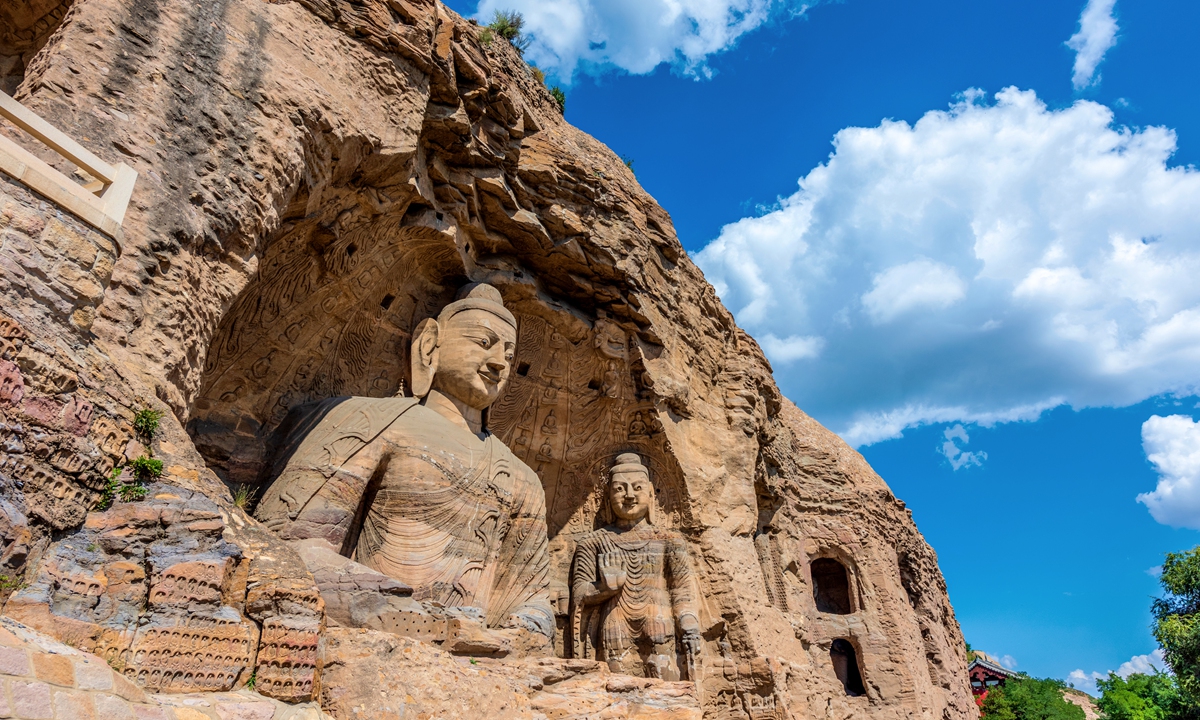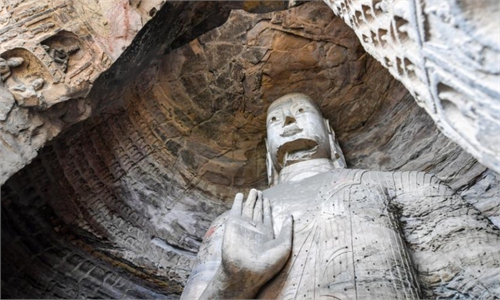ARTS / CULTURE & LEISURE
Yungang Grottoes exhibition opens at Japanese university
Exchanges show inclusiveness of Chinese culture

Buddha statues at the Yungang Grottoes Photo: VCG
An exhibition about China's Yungang Grottoes kicked off at Waseda University in Japan earlier in June, marking the first time art from the World Heritage Site has been displayed in another country in the past five years.The exhibition provides an overview of the Yungang Grottoes as well as a summary of international and Chinese scholars' research on the site over the past century.
Zhang Zhuo, the former head of the Yungang Grottoes Research Institute, told the Global Times in a previous interview that the Yungang Grottoes in Datong in North China's Shanxi Province, is a valuable heritage site that represents the height of Buddhist art in China.
"The Japanese attach great importance to the Yungang Grottoes as they see them as the origin of Buddhism entering Japan during the Tang Dynasty [618-907]," said Zhang.
The ties between the Yungang Grottoes and Japan date back many years.
In 1902, Japanese architect Chuta Ito visited the grottoes while investigating architecture dating to the Liao (916-1125) and Jin (1115-1234) dynasties in China. He noted that the sculptures in the sixth grotto he visited could have been remnants from the Northern Wei Dynasty (386-534) based on an inscription inside the cave. His subsequent publications on the topic sparked widespread discussion about the Yungang Grottoes.
Japanese researchers continued to carry out research at the Yungang Grottoes during the Japanese invasion of China. Cultural critic Yu Jinlong told the Global Times that their research under such circumstances was a "violation of China's cultural sovereignty."
From 1938 to 1944, a team of Japanese professionals, including photographers, surveyors, calligraphers and manuscript copyists, conducted seven field studies at the Yungang Grottoes, which allowed them to later publish numerous works on the subject.
Therefore, China holding the exhibition about the Yungang Grottoes in Japan "demonstrates the inclusiveness of Chinese culture," said Yu. In the meantime, a lot of netizens believe that the history of the invasion should not be forgotten while Japanese admire the beauty of China's Yungang Grottoes.
Looking back at history, the formation of Chinese culture is the result of accommodating diverse cultures. For instance, Buddhism did not originate in China, but after it was introduced to China, it assimilated into mainstream Chinese culture, becoming an essential part of the nation.
The roots of Japanese culture lie in Chinese culture. During the Tang and Song (960-1279) dynasties, Japan sent numerous envoys to China to study. These envoys brought back with them numerous cultural facets that became part of Japan's mainstream culture. For instance, the country's tea culture came from China.
"To build a global community with a shared future, we should allow Chinese culture to benefit people in all countries around the world," he noted.
The last foreign exhibition on the Yungang Grottoes took place in 2018 at Stony Brook University in New York.
As the largest and the only imperial grottoes in China, the Yungang Grottoes boasts 254 caves that host more than 59,000 statues. The grottoes, which have 45 major caves, were inscribed on the UNESCO World Cultural Heritage list in 2001.




